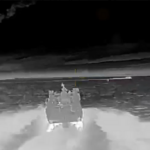1. Vuhledar’s significance. The Ukrainian soldiers’ defense of Vuhledar is a real feat. They suffered losses that were many times higher than ours for two and half years and they repelled major offensives from 2022 and 2023. The city was strategically important for controlling the southern flanks of Ukraine‘s defence forces in the Donbas. The city was in a very advantageous position with its commanding height, dense urban development and better radio horizons. This allowed drones to have better radio horizons and provided firing positions for all types weapons.
2. Consequences. It was highly beneficial to hold Vuhledar. Its loss will have serious strategic consequences. A large fortified area with many well-equipped positions, minefields and other obstacles has been lost. After this, the enemy “rolls up” the front to advance from the east toward Velykanovosilka and from the south towards Kurakhove, where there aren’t any defensive lines. A new defensive line is needed immediately to protect the eastern borders of Dnipropetrovsk, Zaporizhzhia and other regions.
3. Was the order to withdraw from Vuhledar timely? And what losses did our soldiers suffer when it was necessary?
The only route into the city, Vuhledar-Bohoyavlenka, came under enemy fire control on September 24, with the occupiers advancing to within 1,400 meters of the road. The command of the Donetsk Operational and Tactical Group, Colonel Lutsenko, should have given an order to withdraw troops from the city in a planned and organised manner, as no forces were available to deblockade it. On September 26, drone attacks by the enemy cut off the city’s access. The command of the Operational and Tactical Group, despite this, did not issue an order for withdrawal in a timely manner, but instead continued to demand the troops “hold the ground.” During nightfall of September 30 and October 1, the command 72nd Brigade, under its own responsibility, retreated the last covering unit due to the inability to continue the defense. The withdrawal was carried out under heavy enemy fire and resulted in losses.
In the last four of the defense of Vuhledar the 72nd Mechanized brigade lost around 30 soldiers who were listed as missing both in the city and along the retreat route. Five soldiers were captured and executed by the Russians at one position. Their identities were not yet known. Our drone footage confirmed this.
4. The following are the reasons for Vuhledar’s loss:
a) The lack of combat-ready reinforcements and reserves to replenish our losses and strengthen the 72nd Mechanized Brigade which directly defends the city. This is the responsibility for the Armed Forces Command.
b) A numerical superiority of at least five times over the enemy. According to the official report of the Russian Ministry of Defense regarding the capture of the town, the Russians concentrated the 36th and 37th Motorized Rifle Brigades as well as the 5th Tank Brigade. The 40th Marine Brigade and the 430th Motorized Rifle regiment were also present, with units from the 14th Special Forces Brigade. The 57th Motorized Rifle Brigade, the 139th Assault Battalion, and the 5th Tank Brigade also attacked the 72nd Mechanized Brigade to the north. Six enemy formations, backed by special forces, assault units, and receiving continuous reinforcements for the attack, advanced against one of ours. They were supported by several Territorial Defense battalions, under-strength, and poorly equipped, from the 125th, 123rd Territorial Defense Brigades, and the combat ready 1st Assault Battalion, “Da Vinci”, which also did no receive reinforcements.
c) Weak organisation and coordination in defence, task setting that does not take into account real capabilities or assess the actual combat readiness and ability of the troops. The leadership of OSUV and OTU did not pay enough attention to the organization of mass drone use, EW, and RER, or covering troops from enemy drones using fire methods. The open spaces and tactical position of Vuhledar allowed for the destruction and coordination of enemy groups using drones, while maximizing the preservation and safety of infantry. However, the military command failed to concentrate drone units which could provide density and mass of strikes.
d) A lack of well-organized, coordinated counterattacks. Infantry units from the TRO with low numbers and weak armament were sent in the breakthrough direction for a long period of time. They could not restore the position but heroically halted enemy advance for a brief time. The line battalions did not have time to prepare for combat or receive reinforcements. The only assault unit transferred by the Armed Forces Command in the last four month to strengthen the 72nd Brigade is the 1st Assault Battalion “Da Vinci,” which was used because there were not enough reserves to defend the area north of Vuhledar. It was involved in battles against units of the 57th Motorized Rifle Brigade, and the 139th Assault Battalion.
e) The lack of a second line of defense well organized that would have enabled stopping the enemy at pre-prepared positions, covered by minefields, in the area of mines north of Vuhledar.
5. Ihor Hryb, commander of 186th Battalion, 123rd Territorial Defense Brigade was killed in mysterious circumstances.
I am gathering information from the soldiers of the Territorial Defence Brigade 123rd. I will soon write about the circumstances surrounding Hryb’s murder as I know them. I will also discuss the actions of 123rd territorial defense brigade in the Vuhledar region, the appropriateness and organization of its command, and the consequences of its deployment.
Yuriy Butusov
Read More @ ukrainefrontlines.com













